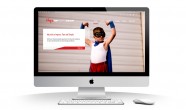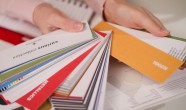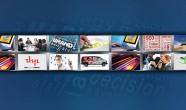If you’ve flipped through printed advertisements lately, you’ve likely seen a QR code. These scannable codes are similar to barcodes, but they’re much easier to create, and anyone with a smartphone can scan one to see the data that the QR code contains. This is why so many businesses are taking advantage of QR technology.
QR Code Uses
While most companies simply use QR codes to direct consumers to a Web URL, this is only one of several dozen uses for a QR code. For example, a QR code could just as easily contain contact information, so it makes sense to print them on business cards. If your small business has an app, you can bring mobile users directly to the download page in the appropriate store via QR code. QR codes can also bring up Facebook and other social networking profiles, smart a text message with predefined text or show a video that you created to users on their smartphones.
These are far from the only uses of QR codes, however. Consider this comprehensive list of the type of data that QR codes might contain:
- Text
- Bank/credit card data
- Website log on
- WiFi network settings
- Google Maps location
- Dropbox URL
- Telephone number
- Skype call
- Email address/email message
- Event in VCalendar format
- PayPal “Buy Now” link
You can easily use your printed calendar to add events to a customer or smartphone, provide them with your contact information or direct them to your office via Google Maps. QR technology is lauded by proponents because your business can finally bridge the gap between printed and digital technology. Users don’t have to wait until they get back to their computers to visit your site, like your Facebook page or send you that email as long as they have a smartphone. Waiting results in conversion drops.
QR Design
QR codes don’t have to be boring, either. You can now print them in color or brand them with an initial or small logo. This helps your QR code blend in with your business card, mailed postcards and flyers. Don’t be afraid to get creative when it comes to QR codes, however. Food containers at restaurants and packaging in grocery stores now use these codes to provider users with additional information. In fact, you might be able to save on printing costs if you replace additional information with a QR code.
QR For the Masses
Scannable codes also work well in locations where many people congregate at once. Times Square in New York City is a perfect example. A poster or billboard can be seen by thousands of people at once, and all they have to do is use their phones to scan the QR code. One code in the proper location can connect dozens or hundreds of consumers to your business as they wait in the doctor’s office or at the bus stop.




